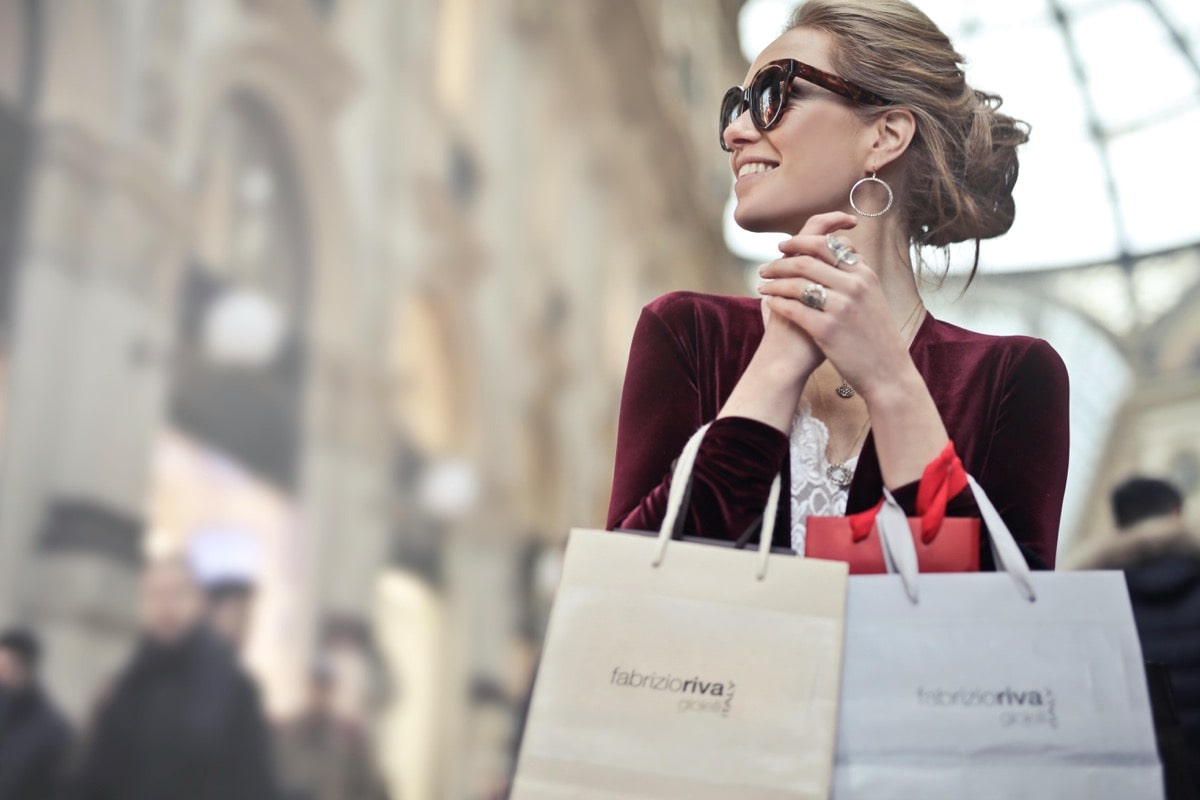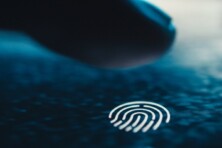Payments at online checkouts gradually move from one-click to zero-click, while offline stores increasingly try to reduce the number of steps one should take between taking a product off the shelf and going out through the exit door with bags full of consumer items. The tendency we see today is not just a quick but completely invisible checkout. Let’s explore how it works.

How Checkout Payments Get Invisible
An invisible payment or a zero-click payment, if you wish, occurs 100% automatically on the back-end, requiring literally no effort from a customer. On the outside it feels like magic. You make a purchase without any swiping, tapping, entering details, or even clicking a “Buy” button. How is that even possible?
Of course, there’s a lot of work occurring behind the scenes. Thankfully, all that is done with the help of smart financial technologies so all retailers have to do is to invest in that tech-driven future and make some initial setup preparations. The same goes for the shoppers. First, they have to register their payment details somewhere. This is done just once, thankfully. A user account is created in-app or on a web platform with saved and most probably tokenised credentials, biometric verification, and other security features. The system then authenticates the user silently (via biometrics, tokenised cards, or secure device ID) at the point of checkout without interrupting the flow. The transaction is processed in the background, whether by bank, card network or other payment processor involved, and the user is notified only after it’s confirmed.
Real Life Use Cases
Although walking out of the store without going to the checkout while having all the purchases paid for still seems a bit futuristic for many, manless shops are already fully operational in numerous locations. Besides, invisible checkout payments are spreading out in segments such as hospitality, event management, subscription and on-demand services, and even at your own home if it’s powered by smart technology. Here are a few examples of the use cases for invisible payments in real-life settings.
Amazon Just Walk Out
Amazon has its contactless checkout technology Just Walk Out installed in dozens of stores across the U.S., UK, Australia, and Canada. The automated checkout works especially well in locations with high customer traffic like sports arenas, entertainment venues and college campuses. Amazon leverages computer vision, sensor fusion, and deep learning to create a simple and maximally automated shopping experience at such places. Upon initial setup, customers should just check in at the store with their apps and grab the products they want to buy. The rest is done by smart technology which determines the name and price of the taken items and charges the linked payment method.
Using a combination of tracking tech, Amazon enables checkout-less purchases of food, clothing, and other items. In some of the Just Walk Out venues, checkout still requires some payment actions from the customer (tapping a credit card or an app-generated QR code). However, with Amazon’s One palm scanning payments or its smart shopping carts, checkout and linked payments become nearly invisible.
Hilton Digital Key & Contactless Stay
One of the top global hotel networks, Hilton offers its guests seamless customer experience that involves as little physical contact with the front desk as possible. Its Hilton Honors app features Digital Key and Contactless Stay options that allow hotel guests to check in and check out via the app, select their room, make special requests, and use their own smartphone as a room key as well as an access card to other hotel facilities like the gym, pool, and parking garage.
While checking in via the app, Hilton guests are requested to add a credit card as a guarantee for their stay. It is stored via the card-on-file solution to cover not only the stay itself but also extra services, charges or purchases (e.g. dining, room service, additional amenities and incidentals). After the checkout, customers receive a receipt for their stay, sent via email or through the app.
Uber Ride Payments
Although you have an opportunity to pay for your rides in cash, Uber offers another automated, “invisible” option which requires only initial setup. When users sign up, they add a preferred payment method (credit card, debit card, PayPal, Apple Pay, Google Pay, etc.). Payment credentials are not stored directly by Uber, they’re replaced by secure tokens handled by the payment processor.
When a user books a ride, they see the price upfront, based on destination, distance, and demand. This sum will be automatically charged to the saved payment method once the ride is over, which is confirmed by the driver. No additional payment actions like opening a wallet, swiping a card, or even confirming anything are required. The payment is done in the background and users receive a digital receipt via their apps and/or email. Location data and device-level authentication help ensure the user is legitimate. However, due to more stringent regulations in some regions, extra authentication may be required from time to time.

Samsung Family Hub
Samsung’s smart refrigerator has a built-in touchscreen, cameras, voice assistant, and internet connectivity. This complex system helps households manage food inventory, plan meals, and buy groceries automatically. Samsung Family Hub is connected to popular grocery shopping apps (Instacart, Amazon Fresh, or Walmart Grocery). Users set up their shopping accounts and preferred payment methods once.
When the setup is complete, internal cameras show users the inside of the fridge remotely, so that they know exactly what products they have and what needs to be replenished. The newer AI-powered models can even recognize items themselves, track expiration dates, and auto-generate grocery lists. The Family Hub analyses the fridge content and user habits to produce auto shopping recommendations.
To relieve users even more, there’s an option of auto-reordering for commonly bought items. In the latter case, the fridge software can order the grocery itself and schedule deliveries through Instacart or another supported provider. There’s no need to re-enter payment information each time or go through several checkout stages, the transaction is processed invisibly in the background, while users get fresh groceries at their doorstep without any fuss.
Designa Parking Solutions
Designa develops fully automated parking systems for global venues and institutions such as airports, hotels, malls, universities, hospitals, and more. If drivers are registered in the system through an app, pay station, or online, they can enter and exit the parking lot without stopping at the checkout and getting a ticket. The vehicle is identified through its license plate number, the entry time is stored in the cloud as a virtual ticket, and upon the exit, the system charges the client’s account autonomously.
Amazon Dash Replenishment
This handy service allows smart appliances, e.g. printers, washing machines, coffee machines, water filters, to automatically reorder consumables (like ink, detergent, filters) when they’re running low. When users set up the device, they link their Amazon account and choose which product should be reordered in the future. The smart appliance then tracks usage automatically and re-orders necessary components/products. It links directly with the Amazon platform, without any manual checkout involved. The marketplace automatically charges the user’s saved payment method and sends transaction confirmation via e-mail and/or app.
Domino’s Zero Click Ordering
Probably, most people have their favourite dishes that they’re constantly ordering. Sometimes, brands offer special promotions for that type of product loyalty. Domino’s took that to another level. Its Zero Click Ordering app allows customers to place their favourite order, aka “Easy Order,” without any clicks. Clients should just open the app and a 10-second countdown begins. If you don’t stop it, the order is automatically placed. For payment, it uses the method saved in one’s app profile, without further input. Other ordering options out of Domino’s AnyWare suite (like order via voice assistants, smartwatches, TVs, or in-car systems) also have an invisible automated checkout, although the order itself might take a few taps or voice commands.
Obstacles to Invisible Checkout Adoption
It seems that invisible payments are a win-win for everybody. They’re quick, seamless, zero-effort and convenient. What can go wrong here? And yet, they’re not too widespread yet. To be frank, there’s a range of obstacles to mainstream adoption of zero-click checkout technology. Here are just a few of them:
- many people prefer to have greater control over their transactions, while zero-click automation makes them feel less empowered;
- some customers feel there’s a lack of privacy in such payment methods, opting out of storing their personal information wherever they can;
- while zero-click payments reduce friction, there are concerns about someone getting access to your device/app/ voice assistant they may as well conduct some automatic transactions that need no user confirmation;
- not all the types of payments can be invisible to the customer due to regulatory requirements, most are available only in specific, highly-monitored conditions.
Why Invisible Payments Are the Future
Despite all these concerns, we clearly see how the industry evolves in addressing the main customer fears: security and privacy. Once upon a time, contactless payments were also often treated with caution. Today, they are everywhere. Zero-click payments are the next step of this evolution. They help to avoid the friction not only of entering payment details but also of initiating payments. Checkout takes place faster, better, and effortlessly. Avoiding checkout lines, scanning, and authorising transactions frees up much time which is so valuable in today’s fast-paced world. That’s why we’ll definitely see more of invisible checkout solutions in the near future.










